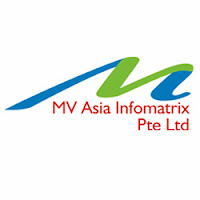Sony has announced the closure of its CCD sensor
factory. CCD camera users are now confronted with questions around
switching to CMOS technology and the availability of current CCD camera
models.
For us, the move toward CMOS technology doesnt
come as a surprise. We started our preparations some time ago and can
offer a broad portfolio of CMOS products.
Sony has scheduled the last delivery of the CCD
sensors that are integrated into Basler cameras for the end of 2026.
Basler will ensure a smooth transition from current Basler products with
CCD sensors to CMOS sensor-based Basler products.
We have put together a list of answers to the
most relevant questions around this transition and around suitable
successors for your CCD sensor-based Basler ace camera.
CCDs been discontinued. Now what?
Experience together with Steve what Sonys CCD discontinuation announcement means and how you can deal with it.
FAQs
When should I begin switching from CCD to CMOS?
In general, you could start any time. Switching
quickly will let you benefit from a performance increase in your
application and from lower camera costs. Therefore, a fast change makes
sense. On the other hand, there is no immediate rush if you are using
CCD-based cameras. They will be available for many years to come. We
recommend taking the time to run the calculations on your application,
to decide which option would be more advantageous.
What do I have to consider when switching?
Relatively little. You should not have any
trouble finding a camera with a suitable CMOS sensor. For an easy
switch, choose a CMOS sensor with the same optical format as your
current CCD cameras, and you all only have to perform minimal
adjustments to your system design. Things are also kept simple if you
stay with your standard interface, Gigabit Ethernet. Basler offers all
new CMOS sensors within the 29 mm x 29 mm housing of its ace models
which allows for easy replacement of nearly all existing camera designs.
It also brings along improved performance in replacement scenarios of
analog FireWire cameras, where space limits are a crucial concern.
What is important when integrating the latest CMOS-based cameras?
Integrating a CMOS camera to replace CCD sensors
is simpler than expected, especially when you choose standard-compliant
hardware and software. Because camera manufacturers take care of the
entire sensor integration including image quality optimization, all you
need to do when choosing the right CMOS camera is to:
- Determine the correct resolution of the camera: The required resolution depends on the details you need to make visible in your images.
- Define the required camera interface: The choice of an interface depends on the required cable length, bandwidth, necessary frame rates and real-time capabilities and PC hardware availability. Our Interface Advisor helps you find the best interface for your application.
- Choose lens and lighting: Changing the sensor format also involves changing the lens. Our Lens Selector makes finding a new lens easy. Lighting must only be adjusted if the sensitivity of the new sensor is different from the previous one.
- Integration effort for software and camera control: Cameras complying with common standards such as GenICam, for example, or interface standards like USB3 Vision or GigE Vision, offer uncomplicated integration.
Which CMOS successors does Baslers portfolio offer today?
Basler has anticipated the trend towards CMOS
sensor technology in industrial cameras early on and offers a broad
product portfolio of CMOS cameras with sensors from various
manufacturers. Just recently, it equipped two ace GigE and two ace USB
3.0 models with Sonys IMX174 CMOS sensor. With a resolution of 2.3 MP
and frame rates of 50 fps (GigE) and 155 fps (USB 3.0), respectively,
this powerful sensor is a recommended choice for demanding applications
in the fields of traffic, microscopy and medicine.
To Know More About Basler Camera Distributor in Singapore, UAE, Southeast Asia, Contact MV Asia Infomatrix Pte Ltd at +65 6329-6431 or Email us at info@mvasiaonline.com
MV ASIA INFOMATRIX PTE LTD
3 Raffles Place, #07-01 Bharat Building,
Orchard Road
Singapore - 048617
Tel: +65 63296431
Fax: +65 63296432
Orchard Road
Singapore - 048617
Tel: +65 63296431
Fax: +65 63296432

No comments:
Post a Comment